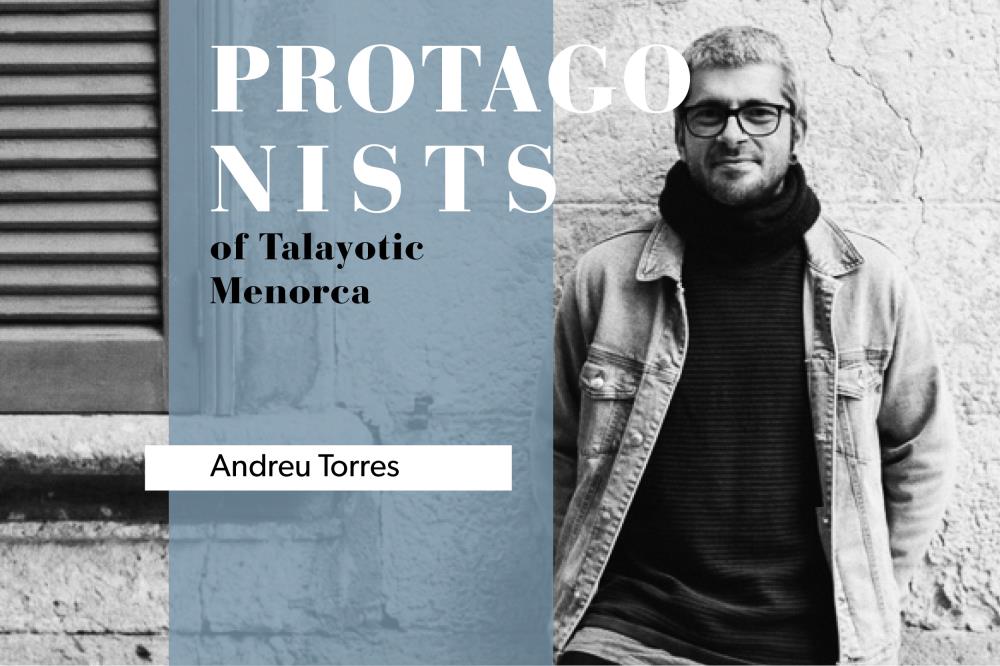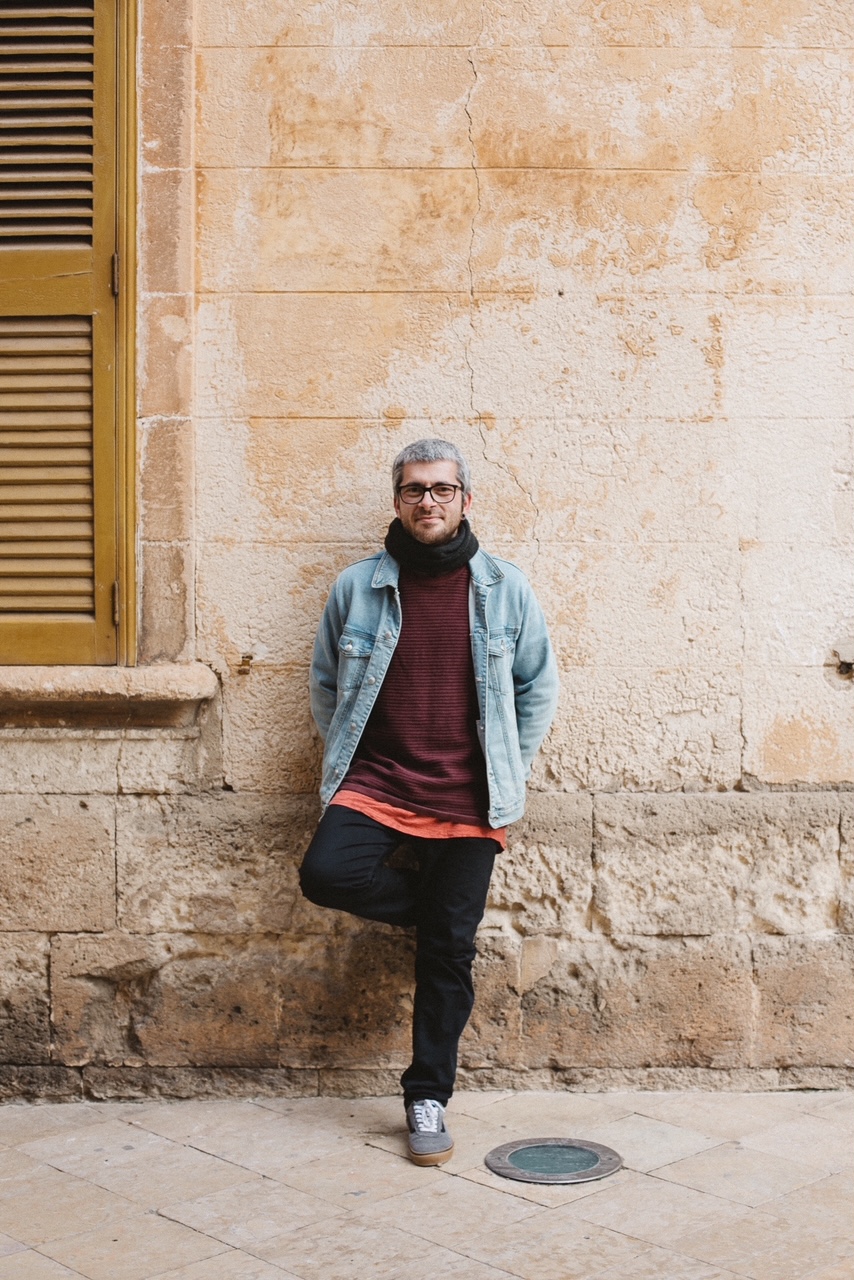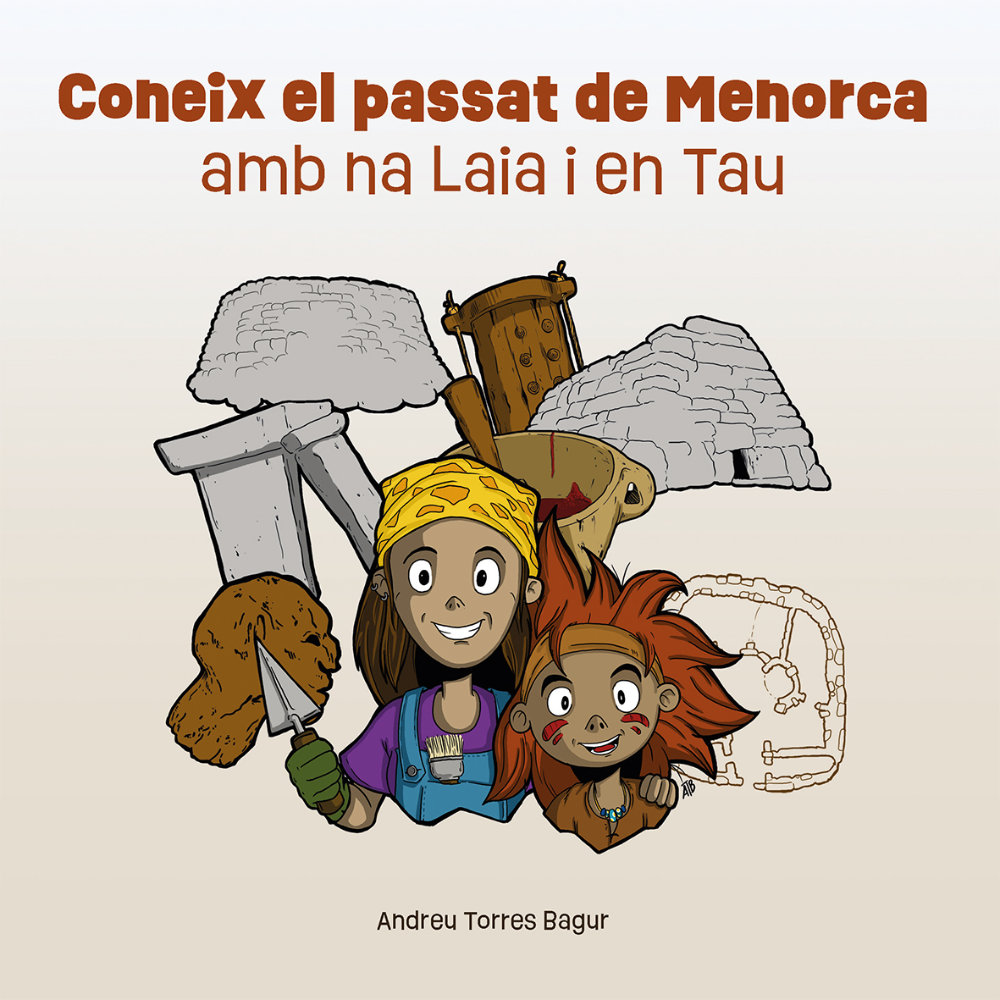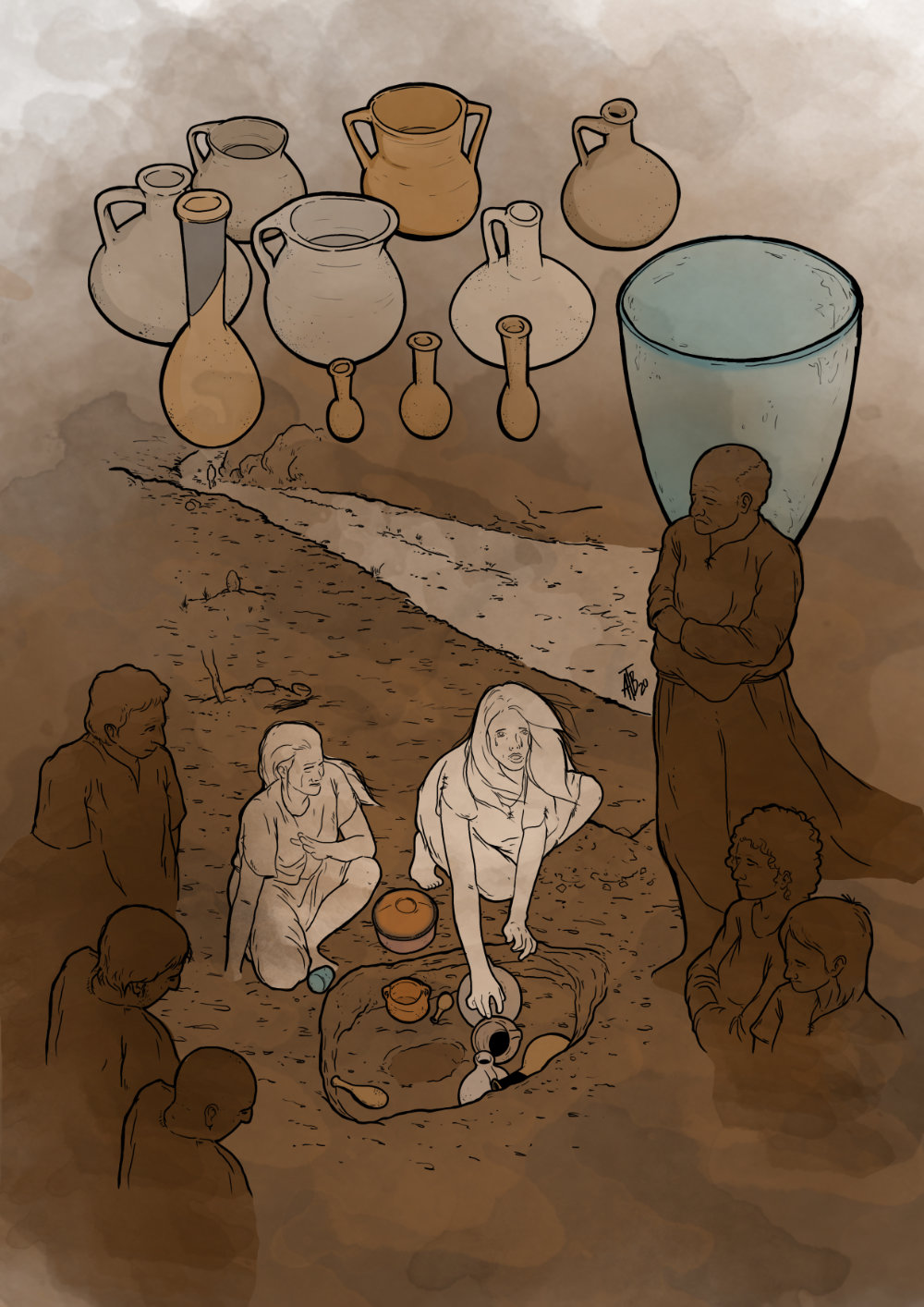 Andreu Torres is an illustrator and archaeologist. With a degree in History from the University of Girona and a master's degree in Archeology and Humanities Research from the same center, he specialized in historical-archaeological illustration at the University of Alicante. This May he will present his new work: Get to know Menorca's past with Laia and Tau, the first children's book in the Sitjot collection, edited by the Consell Insular de Menorca to spread the word about Talayotic culture and Menorcan historical heritage.
Andreu Torres is an illustrator and archaeologist. With a degree in History from the University of Girona and a master's degree in Archeology and Humanities Research from the same center, he specialized in historical-archaeological illustration at the University of Alicante. This May he will present his new work: Get to know Menorca's past with Laia and Tau, the first children's book in the Sitjot collection, edited by the Consell Insular de Menorca to spread the word about Talayotic culture and Menorcan historical heritage.
Before talking about the new book, let's start with your story. How did you get into the world of archeology and illustration?
During my History degree I discovered archaeology; I participated in excavation campaigns at university and it was at that moment that I felt attracted by this whole world.
Historical-archaeological illustration is something I've been doing for four or five years. Since I was little I liked to draw, and when I immersed myself in the world of archeology I tried to draw how the things I excavated or visited could be like. Today it has become my job!
Are you specialized in the study of a specific era?
I am not really specialized in any particular era, but, through the excavations I have carried out and my own interest, I could say that I get along very well with the Talayotic and Roman eras, especially the late-republican and imperial periods. And outside of the archaeological world, I'm also very interested in the World War II era.
What fascinates you most about Talayotic culture?
Well, without getting into topics such as the monumentality of the great stones, which are later very difficult to remove during the excavations, what fascinates me about the Talayotic culture is that, at a time when the rest of the societies that surrounded them used writing, they haven’t left us anything written down (at least not until now). Therefore, they’ve forced us to understand their way of living only through their material remains, without any clues about how to interpret anything. This often makes us archaeologists have to use our imagination for too many things.
A book about Talayotics
This April Get to know Menorca's past with Laia and Tau, the new children's book from the Sitjot collection, will be launched. How was this project, which you have elaborated both the texts and the illustrations for, born?
For a long time I wanted to make a small book to approach Talayotic Menorca to the young ones. I believed that there weren’t many things about Menorca’s archeology that could reach this audience. Most texts related to archeology are articles or books that, even for us, are too heavy. With this in mind, and through the Cultural Rescue program, I made a proposal to the Consell Insular de Menorca to do this book with some simple texts, many illustrations and photographs and, above all, accompanied by two characters: Laia, an archaeologist, and Tau, a Talayotic boy.
What will young readers find in this book?
Well, it will be a first contact with the Talayotic culture, from the first settlers to the conquest of the island by the Roman army. A journey through all of Menorcan prehistory accompanied by Laia and Tau. Kids will learn how they lived, what they ate, where they buried their dead and many more curiosities.
Archaeological illustrations
What’s the process of elaborating archaeological illustrations like? What is reality and what is fiction in this type of work?
It is a process with different phases. The first thing is to seek information about the society being represented or the buildings to be restored and place it within its historical and archaeological context. This allows us to understand the interpretations that archaeologists have made about the site and, therefore, to establish some initial ideas for the illustration. The second phase would be to make sketches, where the main elements that we will highlight in the illustrations are established.
About what is reality and fiction, depends on many things, such as the understanding that we have about the site and the society that lived there, or if there are historical sources that speak about the elements to be illustrated. We can even draw inspiration from a ceramic decorations, reliefs, sculptures, etc. There are things that are impossible to know if we don’t have any of the references that I previously metioned, but if you draw inspiration on parallels or just from your imagination they can look credible, like hairstyles!
And what difficulties do you encounter when translating scientific knowledge, in this case archaeological knowledge, into an image?
The most complicated thing for me, depending on the era to be illustrated (such as the Talayotic or those in which there is no visual information), is to reproduce the environment, the essence of the scene. We can know about many things, such as architecture, clothing, materials, but it’s difficult, I think, to be able to imagine what day to day life was like, what the environment was like inside a Talayotic house: was there a lot of smoke? How were things arranged? One of the tricks we use is to look for societies that have graphic material, either through their art or written information, and we treat them as parallels for our illustration.
Another complicated thing is to find a way to create images that puts the greatest amount of information at the viewers fingertips. Sometimes we must seek a combination of different techniques to provide complete information on, for example, a building. In this case, we can create openings that would be totally implausible in reality, so that the viewer can see what its interior was like.


 Apart from the new Sitjot book, what other works related to Talayotic culture have you illustrated?
Apart from the new Sitjot book, what other works related to Talayotic culture have you illustrated?
As I mentioned before, about four years ago I began to practice historical-archaeological illustration, and since then I have been able to make several illustrations for the archaeological sites on the island, as well as illustrations for some publications. But for now, what I am happiest about is having been able to illustrate the new permanent exhibition at Can Saura, which I hope we can see soon!
We’ll be sure to go. And what other projects do you have underway?
Right now I have two projects: one for an exhibition at the Museu de Menorca and another for historical-archaeological recreation in Galicia. Also, with Bruno Parés we have a 3D restitution and illustration project underway that we hope we can show soon.